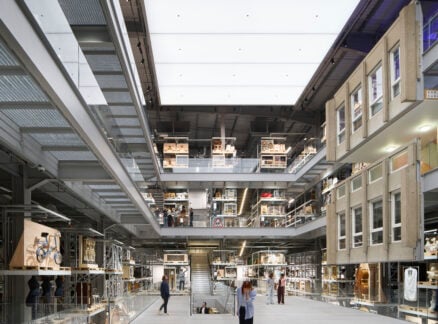November 16, 2004
The Voting Booth Project: Where Art and Democracy Meet?
In hopes of finding midday solace and a moment of relief from election anxiety, I recently visited The Voting Booth Project, an exhibit of Votomatic booths customized by four dozen artists and graphic designers. I went to the politically left-leaning show, which is being staged at New York’s Parson’s School of Design through December 5, […]
In hopes of finding midday solace and a moment of relief from election anxiety, I recently visited The Voting Booth Project, an exhibit of Votomatic booths customized by four dozen artists and graphic designers. I went to the politically left-leaning show, which is being staged at New York’s Parson’s School of Design through December 5, expecting encouragement (Keep calling the beleaguered Ohio voters!), corroboration (We were robbed in 2000!), insight (Here’s why!), vision (Here’s something we can do to fix it!), and, at the very least, catharsis. Instead I left the exhibit in a state of further agitation, having been disappointed by its collection of last-minute, one-liner ideas.
The problem may have been the show’s brief. According to Parsons’ new Dean, Paul Goldberger, participants were requested to “respond to the booth in any way they chose—by turning it into a new work of art, by embellishing it, or even by using it as the inspiration to design an alternative version of a voting machine.” That’s the kind of open-ended brief designers look forward to most: an important issue to tackle and carte blanche to carry out their ideas. But devoid of parameters or a set of criteria, it’s also a brief that can lead to hazy or—at worse—lazy thinking, especially when issued to busy “leading artists and designers.”
Case in point is SHoP’s lovely but puzzling entry, “Anatomy of a Vote,” which features strings of parchment hanging below a sieve-like acrylic structure. SHoP’s project statement reveals levels of thinking that the work does not: “What seem to be a myriad of influences and choices in our so-called democracy,” the statement reads, “are in fact…a disguise for the true power structures below it. Unless we expose these structures and educate the populace, the Constitution isn’t worth the parchment it’s written on.” I couldn’t agree more with the sentiments, but what structure is the acrylic exposing, and what processes do we see at work besides the shredding (and very deliberate and dainty shredding at that)?
Less baffling and more disappointing are projects by Abbott Miller and Lindy Roy. For “George of the Jungle,” Miller propped his Votomatic on 10-foot-high legs and hung over 1500 shiny plastic monkeys from the machine’s bottom. “A barrel of monkeys, a barrel of fun,” reads his statement. I suppose it was fun buying all those monkeys and stringing them together, but beyond that, the visual metaphor that Republicans are monkeys—if that is the intent—is easy, and oversimplifies a complex reality by implying that democracy is a game.
“WMD,” by Lindy Roy with Ezra Ardoline and Heidi Werner, doesn’t come off any better. A Votomatic painted orange and plastered with decals, the booth is obvious and rushed. I can image its genus: during a panicky late night in the studio, the team saw a left-over canister of fluorescent orange paint, thought “aha!,” and were finishing up the final brush strokes in under ten minutes. But then it must have taken another hour or so the next day to find those biohazard stickers.
These shortcomings aside, the exhibit does have a few strong projects. The smashed booth by Pentagram partners Michael Beirut and James Biber (“Crush”) offers if not a punching bag, then the emotional release that comes from hopping into a steamroller and gleefully squashing stuff. Upon the pile is a tiny, proud plastic elephant. A simple execution, maybe, but the booth’s evisceration taps into the primal emotion of violation shared by many after the 2000 election.
And then there’s David Byrne and Danielle Spencer’s wall-mounted photographs: “Itsy Bitsy Democracy / Big F**king Democracy.” Comprising two pictures—one of a really really small Votomatic at an election site and one of a really really big one—the project made me think about how the experience of voting can be the Wonderland Byrne and Spencer allude to in their statement: “I love the voting process—visiting public school cafeterias and mingling with everyone who lives in the neighborhood. But maybe New Yorkers have it easy. In other places the process might feel intimidating, difficult and confusing—like Alice after eating the cake. ”
Such moments of The Voting Booth Project resonate deeply, but in general, the exhibit’s entries—many by people whose work nearly always manages to scratch an intellectual itch or overcome everyday inertia with surprise or wit—remain as unresolved as the election process itself. Perhaps future incarnations of the show should consider a more pointed invitation, issued to fewer lame ducks and more up-and-coming challengers.





